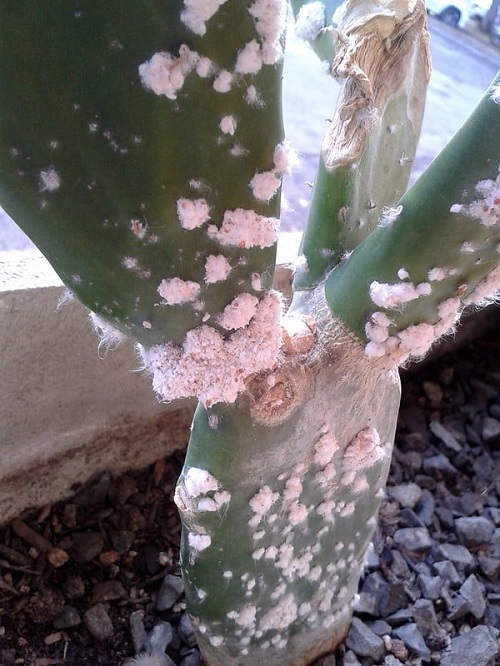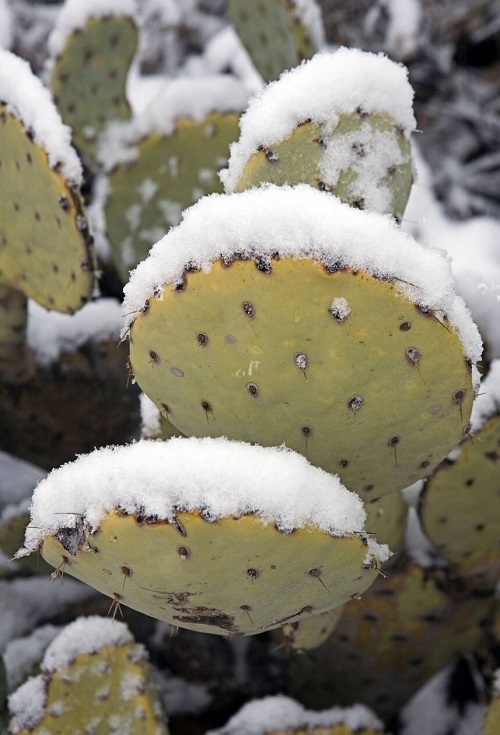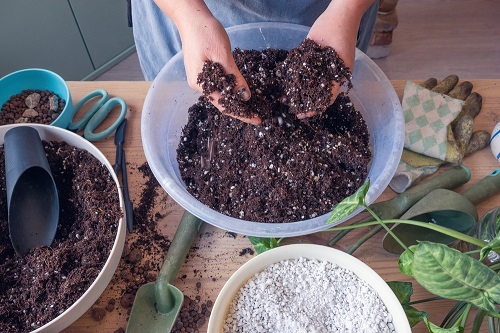Are you worried about – Why is My Cactus Turning Yellow? Here are the top Reasons and Solutions to help you out!
Why is My Cactus Turning Yellow – you may have asked to yourself if you have them in your plant collection. Cacti are known for their resilience, but sometimes they can turn pale, indicating that something is wrong. In this article, we will explore the various reasons why your cactus may be turning yellow and provide solutions to help your plant recover.
Check out the 15 Best Large Cactus Plants To Grow Indoors here
Why is My Cactus Turning Yellow? Reasons and Solutions
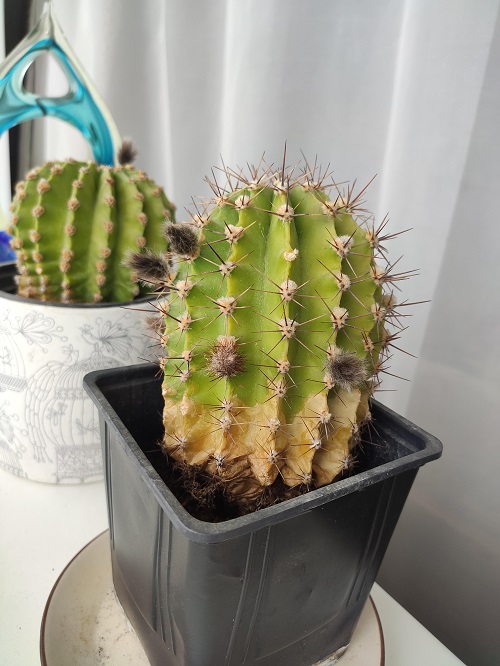
1. Reason: Incorrect Watering
Proper watering is crucial for the health of your cacti, even though they are desert plants. Ensure that water drains from the drainage holes and remove any stones glued to the bottom of the pot, which can block drainage.
Overwatering
Overwatering can cause stress to your cactus, resulting in a yellow shade on your plant. To prevent this, water your cactus only when the soil is completely dry. Consider using a moisture meter to measure the level of moisture in the soil accurately.
Here are Signs of Overwatering & How to Save an Overwatered Plant
Underwatering
Underwatering your cactus can also cause problems such as yellowing. It’s important to water your plant regularly to provide essential nutrients. Use your phone’s calendar to set reminders and determine the perfect watering interval for your cactus.
Watch out for these 5 Sure Shot Signs of Underwatered Plants
Type of Water
Tap water can damage the soil of your cactus, leading to the formation of salt crystals. If you notice white stains on the soil, switch to a cactus-specific soil mix, which is affordable and readily available at most plant stores. Allow the tap water to sit overnight before using it to hydrate your cactus. This process ensures that the fluorine settles, and you can use healthy, clean water.
2. Reason: Location
Too Much Sunlight
- Sunburn: Excessive direct sunlight, especially during the hottest part of the day, can lead to sunburn on the cactus. This can result in yellowing, browning, or reddening of the affected areas.
- Protect from Direct Sunlight: Move the cactus to a location with partial shade or filtered sunlight to protect it from intense direct sunlight. You can use sheer curtains, shade cloth, or place it under a shade structure to provide adequate sun protection.
Too Little Sunlight
- Lack of Photosynthesis: Insufficient sunlight can hinder the cactus’s ability to carry out photosynthesis, leading to a lack of energy production and nutrient absorption. This can result in overall yellowing and weakened growth.
- Provide Adequate Sunlight: Ensure that the cactus receives sufficient light according to its specific light requirements. Place it in a location with bright, indirect sunlight or provide artificial grow lights if natural light is limited. Aim for 4-6 hours of direct or bright indirect sunlight per day.
3. Reason: Environmental Shock
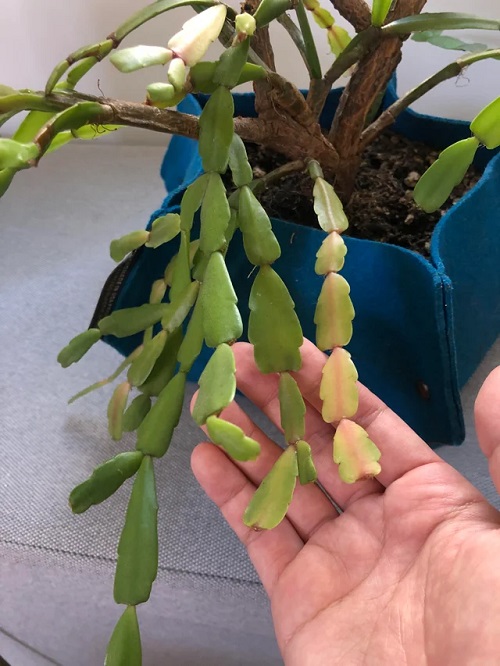
A newly purchased cactus may develop a yellowish tint due to the change in environment, which is not uncommon.
Solution: Give the cactus time to recover and adjust to its new environment. Avoid further stressors and shield the cactus from harsh weather conditions, such as freezing temperatures or intense heat during this period.
Proper watering is still essential, and if the issue persists, consider repotting the cactus in better soil.
Here are Top Tips to Minimize Transplanting Shock
4. Reason: Small Container
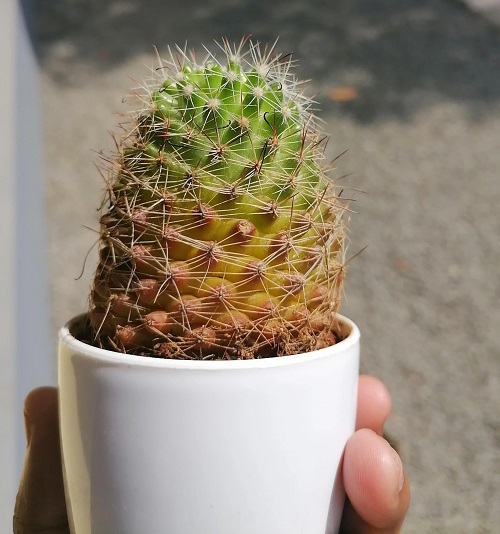
If the cactus has outgrown its small container and its roots are cramped and restricted, it can lead to poor root health and nutrient uptake. This can result in yellowing of the cactus due to stress and inadequate nourishment.
Small containers have limited soil volume, which can deplete nutrients more quickly. If the cactus is not receiving adequate nutrients through appropriate fertilization or if the soil is not replenished regularly, it can lead to nutrient deficiencies and yellowing of the plant.
Solution: Repot the cactus into a larger container that provides ample space for root growth. Ensure the new container has proper drainage holes to prevent waterlogging.
Use a well-draining cactus potting mix or amend the soil with materials like perlite or sand to improve drainage.
Here are Plant Pot Sizes from Inches to Gallon
5. Reason: Mineral Deficiency or Over Fertilization
Cacti, like all plants, require specific minerals and nutrients for healthy growth. When a cactus lacks essential minerals, such as nitrogen, phosphorus, potassium, iron, or magnesium, it can exhibit yellowing symptoms.
Different mineral deficiencies can manifest in different ways, but yellowing is a common symptom. For example, nitrogen deficiency often causes overall pale yellowing, while magnesium deficiency may lead to yellowing between the veins of the cactus.
Applying excessive amounts of fertilizer to a cactus can result in over-fertilization. This can disrupt the delicate nutrient balance in the soil and lead to nutrient imbalances or toxicities. Over-fertilization can cause the cactus to exhibit symptoms such as yellowing, browning, or burning of the foliage.
Solution:
- Mineral Deficiency: Identify the specific mineral deficiency by examining the yellowing patterns and other symptoms. You can consult a gardening guide or seek advice from a local plant expert to determine the appropriate mineral deficiency and its treatment. Adjusting the fertilization routine or applying targeted mineral supplements can help correct the deficiency.
- Over-fertilization: Flush the soil with water to help leach out excess fertilizer salts. This can be done by watering the cactus thoroughly and allowing the water to drain through the pot. Avoid fertilizing for a period of time to allow the cactus to recover. Going forward, carefully follow the recommended fertilization instructions for cacti and apply fertilizers sparingly.
Here is the Best Fertilizer For Cactus
6. Reason: Ageing

As cacti grow older, the older lower segments or leaves of the plant may naturally turn yellow and die off. This is a normal part of the plant’s life cycle, and new growth should continue from the top or center of the plant.
Solution: Research the species or ask a professional for guidance. Observe the plant closely, and if it appears healthy, the color change is likely normal.
7. Reason: Pest Problem
- Scale insects are small, immobile pests that attach themselves to the cactus and feed on its sap. Heavy infestations can cause yellowing, wilting, and stunted growth of the plant.
- Mealybugs are soft-bodied insects that gather in clusters and produce a white, powdery substance. They feed on the cactus’s sap, leading to yellowing, distortion, and weakening of the plant.
- Spider mites are tiny arachnids that suck sap from the cactus leaves. Their feeding activity can cause yellow stippling or mottling on the leaves, leading to overall yellowing and decline of the plant.
- Root mealybugs infest the root system of cacti and can cause significant damage. They feed on the roots, hampering the plant’s ability to uptake water and nutrients, resulting in yellowing and wilting of the entire plant.
- Nematodes are microscopic roundworms that can invade the roots of cacti. They cause damage to the root system, leading to nutrient deficiencies, stunted growth, and yellowing of the plant.
Once the pests are identified, appropriate pest control measures should be taken. This can include physical removal, insecticidal soaps, horticultural oils, or other pest management strategies, depending on the specific pest and severity of the infestation.
Click here to learn the Amazing Natural Pesticide Recipe that can Kill any Pest
8. Reason: Frost Damage
Yellowing of a cactus may be caused by frost damage which can be irreversible. Freezing temperatures can cause permanent harm to a plant’s tissues and cells, resulting in scarring on the leaves.
Solution: To help the cactus recover, try moving it to a location with more sunlight or higher humidity. If it was damaged by frost, keep it in an area where temperatures are around 50 F and wait until new growth appears before returning it to its normal conditions.
Note: If the damage is too severe, it may not recover.
9. Reason: Diseases
The yellowing of a cactus can be an indication of various diseases. One of the most common fungal infections that can cause this symptom is Cephaleuros wilt, which is caused by the fungus Verticillium dahliae (Vd). This infection leads to the death of water-conducting tissues in the plant, affecting its ability to transport water throughout its body.
Another disease that can cause yellowing is chlorosis or iron deficiency, which is common among cacti and succulents. This happens when the plant doesn’t absorb enough nutrients from the soil, resulting in an overall lighter green color with light brown speckles. Under or over-watering can cause this disease to occur.
If left untreated, diseased cacti will eventually die off altogether.
The solution is to repot them into fresh soil with a better drainage system and cut off any dead roots with a pair of scissors. Provide plenty of direct sunlight to the plant right away to encourage new growth.
Here is How to Dispose of Diseased Plants and Weeds
10. Reason: Temperature Fluctuation
Sudden temperature changes are a common cause of a cactus turning yellow and can happen when you move it to a new location or place it near a heat source such as an oven vent or heater.
Solution: If you suspect temperature changes are the cause of your cactus turning yellow, it is important to move the plant gradually to its new location over several days. This will help prevent sudden changes that can stress the plant and cause it to turn yellow.
Keep in mind that when a cactus turns yellow due to sudden environmental changes, it may take some time for the plant to recover. Patience and careful monitoring of the plant’s growth and color can help you determine if it is on the path to recovery.
11. Reason: Poor Soil
If your cactus plant is growing in a pot with low-quality soil and low nutrient content, it may start to turn yellow.
- Assess the Growing Medium: Evaluate the composition and condition of the growing medium. Ensure that it is well-draining and allows excess water to flow out easily. If the medium is compact, retains water excessively, or lacks proper aeration, it can lead to root issues and yellowing.
- Repot the Cactus: If the current growing medium is inadequate, repotting the cactus into a suitable medium is necessary. Use a well-draining cactus or succulent-specific potting mix, or prepare your own by combining regular potting soil with coarse sand or perlite to improve drainage.



